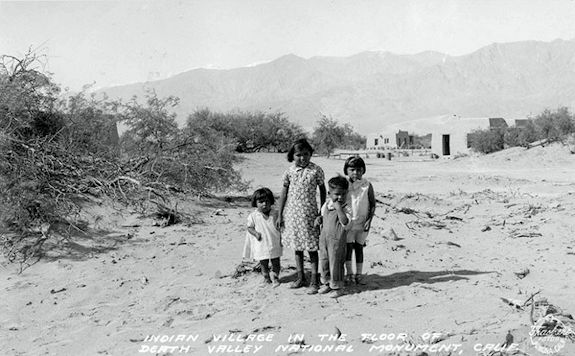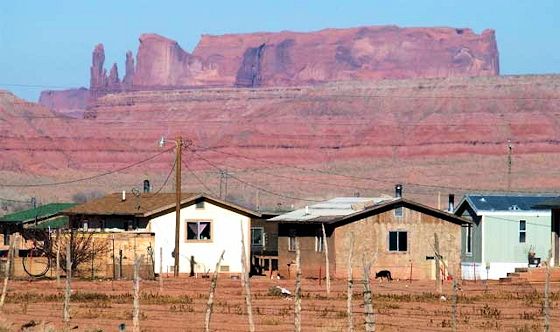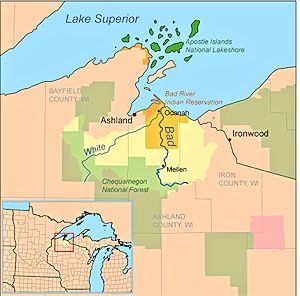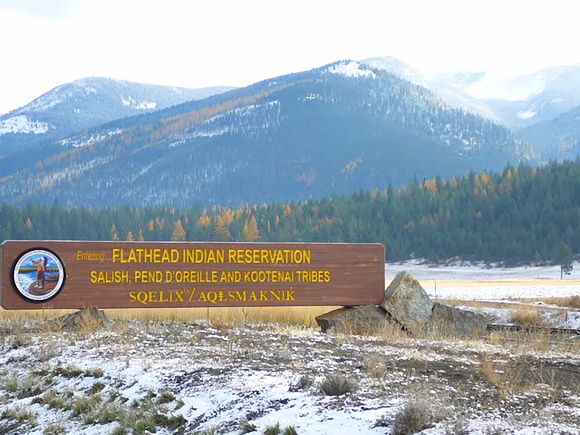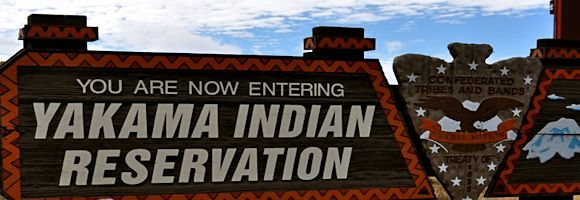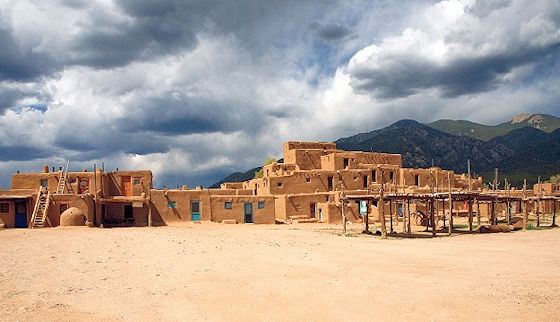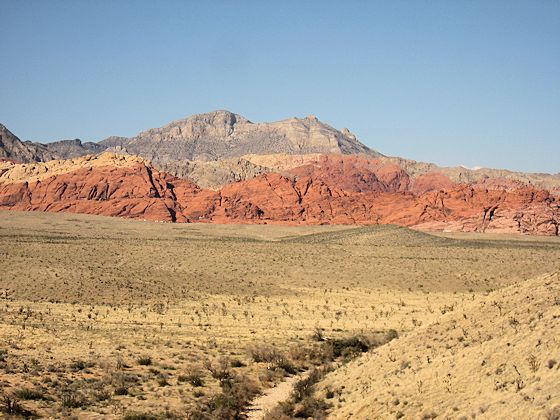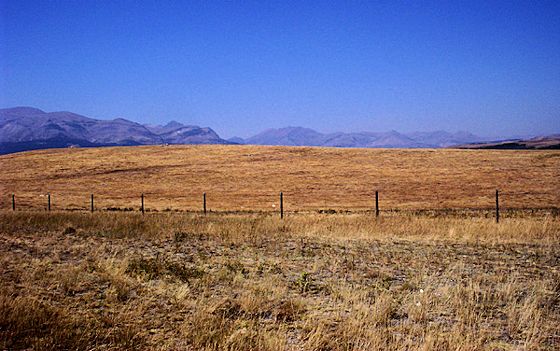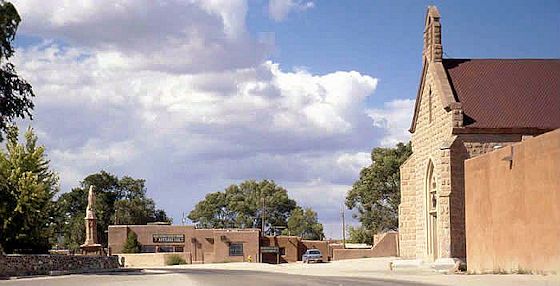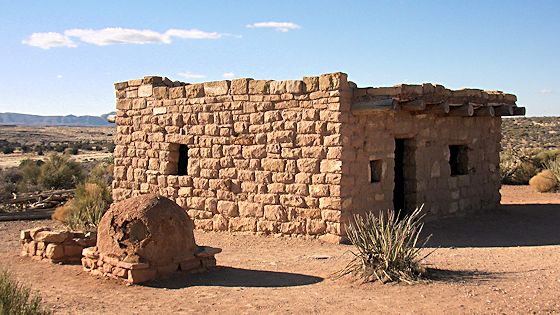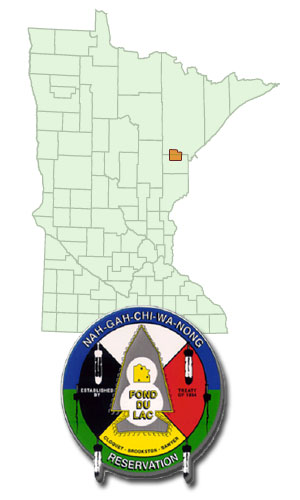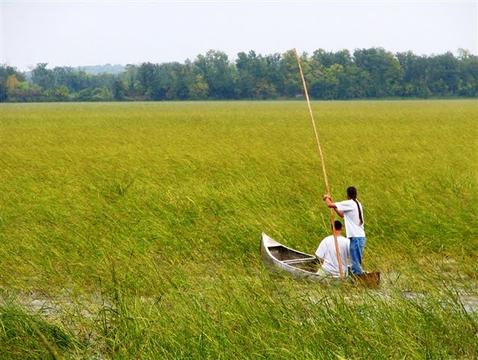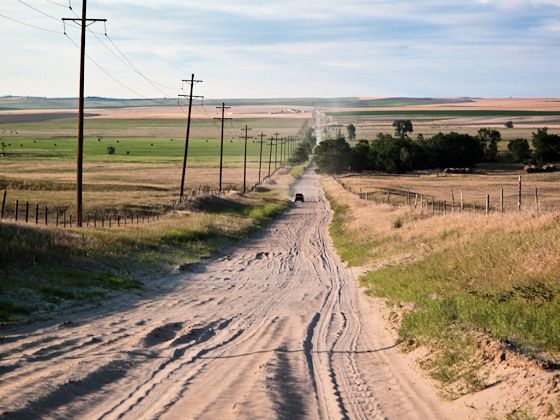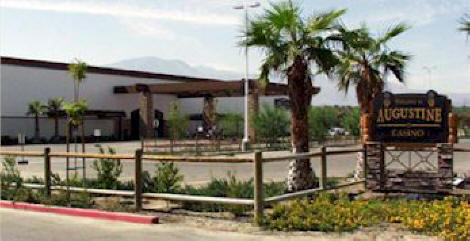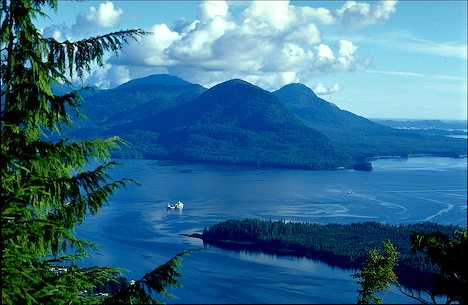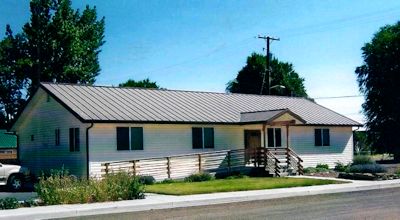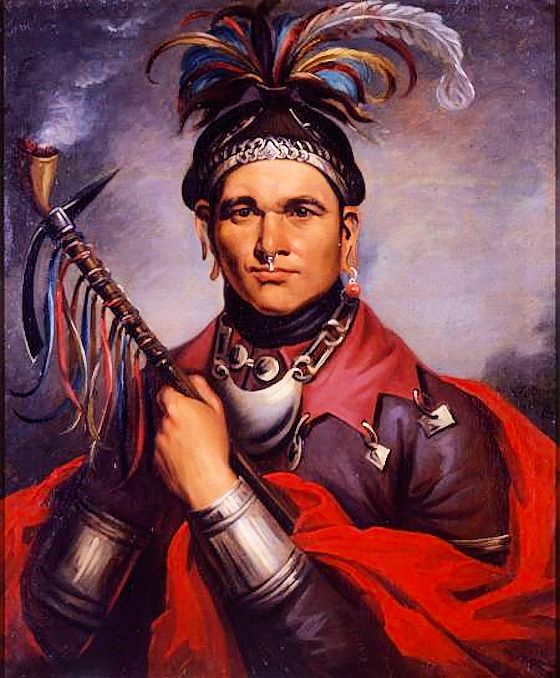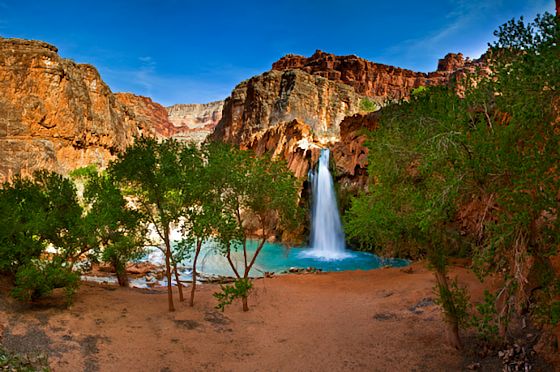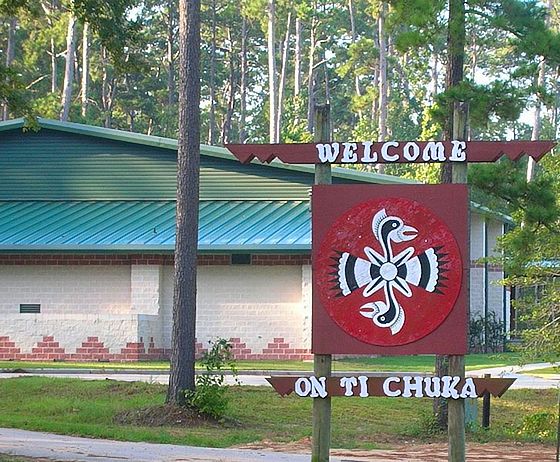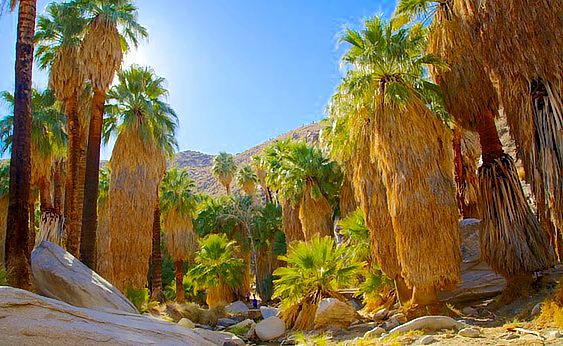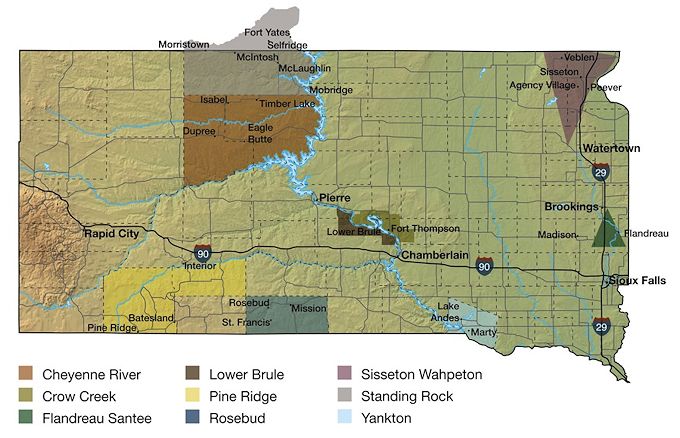The Death Valley Indian Community is home to the federally recognized Timbasha Shoshone. This reservation was not formally recognized as an Indian reservation until 1982. It encompasses just under 10,000 acres. President Hoover took the tribe’s ancestral lands to create the Death Valley National Monument in 1933.
Reservations A to Z
An Indian reservation is an area of land managed by a Native American tribe under the United States Department of the Interior’s Bureau of Indian Affairs. There are about 310 Indian reservations in the United States, meaning not all of the country’s 550-plus recognized tribes have a reservation — some tribes have more than one reservation, while others have none. In addition, because of past land allotments, leading to some sales to non-Indians, some reservations are severely fragmented. Each piece of tribal, individual, and privately held land is a separate enclave. This jumble of private and public real estate creates significant administrative, political, and legal difficulties.
Other names that mean indian reservation
In California, about half of the Indian reservations are called Rancherias and many tribes are referred to as Mission Indians. In New Mexico, most reservations are called Pueblos. In some western states, such as Nevada, there are Native American areas called Indian Colonies.In Alaska, with one exception, Alaskan Natives do not have reservations, but are organized by villages, which do own lands reserved for the use of the village, and whose interests are overseen by Regional Corporations.
In Canada, reservations are called Reserves.
2.3% of the United States is designated as Indian reservations.
The collective geographical area of all reservations is 55.7 million acres (225,410 km²), representing 2.3% of the area of the United States (2,379,400,204 acres; 9,629,091 km²). Twelve Indian reservations are larger than the state of Rhode Island (776,960 acres; 3,144 km²) and nine reservations are larger than Delaware (1,316,480 acres; 5,327 km²). The Navajo Indian Reservation, the largest in the US, compares in size to the state of West Virginia. Reservations are unevenly distributed throughout the country. The majority are west of the Mississippi River and occupy lands that were first reserved by treaty or ‘granted’ from the public domain.
Most reservations have laws independent of off-reservation lands
Because tribes possess tribal sovereignty, even though it is limited, laws on tribal lands vary from the surrounding area These laws can permit legal tribal casinos on reservations, for example. The tribal council and tribal courts, not the local or federal government, generally has jurisdiction over reservations. Different reservations have different systems of government, which may or may not replicate the forms of government found outside the reservation.Most Indian reservations were established by the federal government. A limited number, mainly in the East, owe their origin to state recognition. As sovereignties, Native American tribes are allowed to enforce both civil and criminal laws among their members. The exception is when a felony crime, such as murder, is involved. Then the FBI has jurisdiction.They also tax, license, and regulate all activities and commerce that is conducted within their jurisdictional boundaries. The governments established by the 564 federally recognized Native American tribes are granted with enforcement of many of the same powers the federal government grants to individual states. These Native American tribes also function under many of the same limitations the government places on states, too. Individual states and Native American tribes are restricted in their operations by three major limitations placed upon them by the US government. Neither entity can wage war, coin their own money or establish a money system, and they cannot engage in independent relationships with foreign nations.
Why they are called indian ‘reservations’
The name “reservation” comes from the conception of the Indian tribes as independent sovereigns at the time the U.S. Constitution was ratified. Thus, the early peace treaties (often signed under duress) in which Indian tribes surrendered large portions of land to the U.S. also designated parcels which the tribes, as sovereigns, “reserved” to themselves, and those parcels came to be called “reservations.” The reservation term remained in use even after the federal government began to forcibly relocate tribes to parcels of land to which they had no historical connection.
As of 2010, approximately 51% of Native Americans and Alaska Natives live somewhere other than their designated tribal reservations, often in large western urban areas, partly due to federal government relocation programs introduced in the 1940s, and partly because that is where employment opportunities are likely to be found….Read more about american indian reservation beginnings.
Also see:Reservation NewsUS Indian Reservations by StateUS Indian Reservations by Tribe
Indian reservations starting with A to C | D to G | H to K | L to N | O to R | S to T | U to Z
Agua Caliente Indian Reservation
22 ViewsThe Agua Caliente Indian Reservation is home to the Agua Caliente Band of Cahuilla Indians. This tribe received federal recognition in 1957. The Agua Caliente Indian Reservation was founded in 1896. A period of forced cultural assimilation followed, including taking Indian children to boarding schools where they were forbidden to speak their language.
Navajo Nation Indian Reservation
22 ViewsOf the 562 federally recognized tribes, the Navajo Nation is the largest tribe with a population of approximately 300,000+ with about 2/3 living on the reservation and most of the rest living in the urban areas of the United States.
Since a large amount of Alaskan tribes have smaller populations and percentages can change at a lower ratio, we focused on American Indian tribes in the lower 48 states that list their tribal enrollments above 1,000 and have at least 500 unemployed.
Bay Mills Reservation
22 ViewsBrief Overview: Land Area: Tribal Affiliation: Population: Reservation Communities: Reservation History: In Recent News: Economy Today: Topography and Climate: Famous Chippewa:
Battle Mountain Reservation
22 ViewsBattle Mountain Reservation is one of six reservations of the Te-Moak Tribe of Western Shoshone Indians of Nevada. It is home to the Battle Mountain Band of Te-Moak Shoshone Indians.
Barona Indian Reservation
22 ViewsThe Barona Reservation is a federal Indian reservation located in San Diego County, California, near Lakeside and the Cleveland National Forest.
Bad River Reservation
23 ViewsThe Bad River Reservation in northwestern Wisconsin is the largest Chippewa reservation in the state. The reservation boundaries include lands in Ashland and Iron counties, 17 miles of Lake Superior shoreline and over 100 miles of rivers and streams. Over 90% of the reservation is undeveloped land.
The Duck Valley Indian Reservation of Idaho and Nevada is situated in a beautiful, green valley on the Nevada and Idaho border. Descendents of the Western Shoshone and the Northern Paiute occupy the Duck Valley Indian Reservation of Idaho and Nevada. Various bands of the two closely related tribes have jointly utilized the area from time immemorial.
Wind River Indian Reservation
22 ViewsWind River Indian Reservation is an Indian reservation shared by the Eastern Shoshone and Northern Arapaho tribes of Native Americans in the central western portion of the U.S. state of Wyoming. Today, the tribes are offically are known as the Shoshone Tribe of the Wind River Reservation and the Arapaho Tribe of the Wind River Reservation.
Flathead Indian Reservation
22 ViewsYakama Indian Reservation
22 ViewsMount Adams, the Klickitat River and the Yakima River are among the defining features of the 1.2 million-acre Yakama Indian Reservation in south central Washington.
Cheyenne River Indian Reservation
22 ViewsThe Cheyenne River Indian Reservation (CRIR) covers almost all of Dewey and Ziebach counties in South Dakota. In addition, there are many small parcels of off-reservation trust land are located in Stanley, Haakon, and Meade counties.
Hoh Indian Reservation
22 ViewsThe Hoh Indian Reservation is located in Washington State was established by an Executive Order in 1893. The Hoh Reservation consists of 443 acres located 28 miles south of Forks, and 80 miles north of Aberdeen. The Hoh Reservation has approximately one mile of beach front running east from the mouth of the Hoh River, […]
The Ho-Chunk Nation of Wisconsin, while having no official reservation has parcels of land placed in Trust as Indian Trust Land as designated by the federal government, Secretary of the Interior and Bureau of Indian Affairs(BIA) spread over Dane, Jackson, Juneau, Monroe, Sauk, Shawano, and Wood Counties, Wisconsin. In 1990, the land designated as trust […]
Winnebago Indian Reservation
22 ViewsThe Winnebago Indian Reservation lies primarily in the northern part of Thurston and a small part of Dixon counties in northeastern Nebraska, with an additional portion in Woodbury County, Iowa. There is also a small plot of off-reservation land of 116.75 acres (0.4725 km2) in southern Craig Township in Burt County, Nebraska. The total land area is 457.857 km² […]
Menominee Indian Reservation
22 ViewsThe Menominee Indian Reservation is an Indian reservation located in northeastern Wisconsin held in trust by the United States for the Menominee Indian Tribe of Wisconsin.
Spokane Indian Reservation
41 ViewsThe Spokane ancestral homelands were located along the Spokane River from the Idaho border to the confluence of the Spokane and Columbia Rivers. Although not participants to the early signed treaties, the Spokane Indians were recognized, and maintained their identity and ties to traditional lands.
Most Populous Indian Reservations
22 ViewsHere is a list of the 25 most populous indian reservations in the United States, as of 2000.
Taos Pueblo Reservation
22 ViewsFamous Pueblo People
Fort Mohave Indian Reservation
22 ViewsThe Fort Mojave Indian Reservation straddles the Colorado River, and the State line of both California and Nevada.
Blackfeet Indian Reservation
22 ViewsBlackfeet Indian Reservation is in the U.S. state of Montana, located just east of Glacier National Park. In fact, the Blackfeet ceded the land that is now Glacier Park to the United States to make the park. It borders the Canadian province of Alberta. The Blackfeet Indian Reservation is home to the primarily Piegan Blackfeet branch, and some Southern Siksika. The other three branches of the Blackfoot tribe reside on other reservations in Alberta, Canada.
San Juan Pueblo
22 ViewsFamous Pueblo People
Hualapai Indian Reservation
22 ViewsThe Hualapai or Walapai are a tribe of Native Americans who live in the mountains of northwestern Arizona, United States. Today they are enrolled in the Hualapai Indian Tribe of the Hualapai Indian Reservation.
Fond du Lac Band of Lake Superior Chippewa Reservation Tribe(s): The Anishinaabeg (an Ojibwe/Chippewa word meaning “The People”) of the Fond du Lac Reservation are primarily members of the Lake Superior Band of Chippewa, who in turn are one band of the federally recognized Minnesota Chippewa Tribe. The Chippewa Nation is the second largest […]
The Bois Forte Band of Ojibwe are one of the six bands that make up the federally recognized Minnesota Chippewa Tribe, which wrote a constitution and initiated its new government in 1936.
Pine Ridge Indian Reservation
22 ViewsThe Pine Ridge reservation is home to the Oglala Sioux Tribe. The Oglala Sioux Tribal members are descendants of the Tetonwan Division of the Great Sioux Nation.
Augustine Indian Reservation
22 ViewsThe Augustine Reservation is home to a federally recognized Cahuilla band of Native Americans based in Coachella, California called the Augustine Band of Cahuilla Indians. They are one of the smallest tribal nations in the United States, consisting of only eight members, only one of whom is an adult.
The namesake for the Augustine Tribe and Reservation was Captain Vee-Vee Augustine who was born in the year 1820. Notes from early explorers indicated that the Cahuilla People were flourishing in the area at this time with 22 villages. In 1856 surveyors with the United States Land Office noted on their maps an important Cahuilla Village that would later be designated as the Augustine Reservation.
Metlakatla, Alaska is a community of Tsimshian people who followed a missionary of the Anglican Church of England, Mr. William Duncan, to a new home in the United States from their previous home in British Columbia, Canada. The United States Congress granted recognition to the new community in 1891 by creating the Annette Islands Reserve, a federal Indian reservation. Today it is the only indian reservation in the State of Alaska.
Alturas Indian Reservation
22 ViewsThe Alturas Indian Rancheria is a federally recognized tribe of Achomawi Indians in California. The Achomawi are also known as the Pit River Indians. The tribe controls a 20-acre (81,000 m2) reservation about one mile southeast of Alturas, California, in Modoc County.
Rocky Boy’s Reservation
22 ViewsBoth Chief Rocky Boy’s band and Chief Little Bear’s band were Plains Indians, a primarily hunting and gathering culture. The hunting of buffalo was central to the lifestyle of Cree people for thousands of years and to western Chippewa since the early1800’s.
Allegany Indian Reservation
22 ViewsAllegany Indian Reservation is an American Indian reservation in New York state. This reservation is primarily home to Seneca people, but a smaller number of Cayuga also live there. Both tribes belong to the Iroquois Nation.
Havasupai Reservation
23 ViewsThe Havasupai Reservation is remotely located near the southwest corner of the Grand Canyon National Park in Arizona and consists of 188,077 acres. It is home to the federally recognized Havasupai tribe.
Alabama-Coushatta Indian Reservation
22 ViewsThe Alabama-Coushatta Indian Reservation is home to the federally recognized Alabama-Coushatta Tribes of Texas. This indian tribe includes Alabama Indians (Alibamu or Albaamaha) and Coushatta Indians (Koasati) who joined together in the 1880s.
Agua Caliente Indian Reservation
23 ViewsThe Agua Caliente Indian Reservation was founded in 1896. It is home to the federally recognized Agua Caliente band of Cahuilla Indians.
Here is a list of the 50 largest federally recognized Indian reservations in the United States by area. It includes all that are larger than 800 km² (300 sq. mi.). Area is defined as all areas included in Tribal Census Tracts by the Census Bureau, and includes water as well as land areas. Statistics are […]
Shawnee Reservations
22 ViewsThe Shawnee Tribe are an Eastern Woodland tribe. Also known as the Loyal Shawnee, the Shawnee Indians are one of three related federally recognized tribes.
Wyoming Indian Reservations
22 ViewsThere is one indian reservation in Wyoming. Wyoming Indian Reservations Reservation: Wind RiverTribes: Northern Arapaho and Eastern Band of Shoshoni.Acres: 95, 307Established by: Treaty of July 3, 1868 (xv, 673); acts of June 22, 1874 (xviIi, 166), and Dec. 15, 1874 (xviii, 291); Executive order, May 21, 1887; agreement made Apr. 21, 1896, amended […]
Wisconsin indian reservations
23 ViewsThere are seven indian reservations in Wisconsin. Wisconsin Indian Reservations Reservation: Lac Court OreilleTribes: Lac Court Oreille band of Chippewa of Lake SuperiorAcres: 20,096Established by: Treaty of Sept. 30, 1854 (x, 1109); lands withdrawn by General Land Office, Nov.22, 1860, Apr. 4, 1865 (see report by Secretary of the Interior, Mar. 1, 1873). Act […]
Washington State Indian Reservations
23 ViewsThere are 21 indian reservations in the state of Washington.
Virginia Indian Reservations
22 ViewsThere are no federal indian reservations in the state of Virginia. However, there are a number of state recognized tribes who have community lands. They are: Virginia Indian Reservations Chickahominy Tribe:RFD 1, PO Box 299Providence Forge, VA 23140 Eastern Chickahominy Tribe:Route 2, PO Box 90Providence Forge, VA 23140 Mattaponi Indian Tribe:Route 2, PO Box […]
Utah Indian Reservations
22 ViewsThere are eight indian reservations in the state of Utah.
Texas Indian Reservations
22 ViewsThere is only one Texas indian reservation.
States with no indian reservations
37 ViewsFourteen states have no indian reservations. States with no indian reservations Arkansas Delaware Georgia Illinois Kentucky Maryland New Hampshire New Jersey Ohio Pennsylvania Tennessee Vermont Virginia West Virginia
South Dakota Indian Reservations
38 ViewsSouth Dakota Indian Reservations Reservation: Crow Creek and Old WinnebagoTribes: Lower Yanktonai, Lower Brulé, Miniconjou, and Two Kettle (Oohenonpa) Sioux.Acres: 111,711Established by: Order of department, July 1, 1863; treaty of Apr. 29, 1868 (xv, 635); and Executive order, Feb. 27, 1885, annulled by the President’s proclamation of Apr. 17, 1885; act of Mar. 2, 1889 […]
Oregon Indian Reservations
23 ViewsThere are 12 indian reservations in the state of Oregon.
Oklahoma Indian Reservations
73 ViewsThere are 27 indian reservations in the state of Oklahoma, which was once known as Indian Territory.
North Dakota Indian Reservations
34 ViewsThere are four indian reservations in the state of North Dakota.
North Carolina Indian Reservations
26 ViewsThere is one one land trust area in the state of North Carolina. As a trust, the land is technically not a “reservation” per se, in that tribal members can buy and own the land, provided they are enrolled members of the Tribe of the Eastern Band of the Cherokee of North Carolina.
New York Indian Reservations
23 ViewsThere are 15 indian reservations in the state of New York.
- 1
- 2
